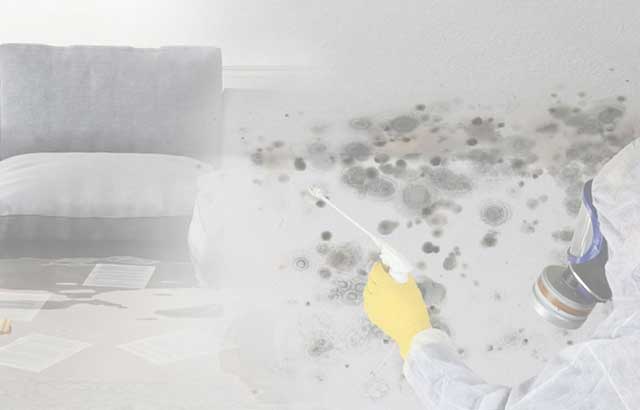Right here in the next paragraph you can discover additional good information on the subject of Looking for Signs of Water Damage in the Bathroom.

The bathroom is extremely vulnerable for moist buildup and also possible water damages because of the frequent use water in it. This post uses easy inspection strategies to aid finding water damages threats.
The regular use of water in the bathroom makes it extremely at risk for damp accumulation and possible water damages. By examining it routinely, you can reduce water relevant problems.
The following collection of assessments is easy to execute as well as should be done as soon as in every 3 months in order to maintain your shower room in good shape and to prevent possible water problems triggered by the bathtub, the shower, pipeline joints and also plumbing, sinks, cupboards, and the toilet
Do not forget doing these evaluations and be thorough while executing them. Bear in mind that these easy inspections can conserve you a lot of money by giving very early indications for water damages
Tub as well as Shower
The shower and bath tub need unique interest and upkeep. Examine the ceramic tiles and change if broken. Ensure that there is no missing out on grout in between the tiles. Evaluate as well as replace split caulking at joints where the walls satisfy the floor or the bath tub. Blocked drains pipes as well as pipelines issues will stop the bathtub from drying out and might indicate severe problems under the bathtub. Seek advice from an expert right away to avoid architectural damage. Focus on discolorations or soft areas around the bath tub walls as they might suggest an internal leakage.
Plumbing
Signs for water damage are tough to discover given that many pipelines are installed inside the walls.
Pay unique focus to flooring and walls moisture and spots as they might indicate an unseen plumbing trouble. Check wetness degrees in adjacent rooms also.
Sinks and also Cabinets
Sinks and cupboards are exposed to wetness as well as moisture daily as well as are usually neglected. Check regularly under the sink and also on the countertop above it. Fix any kind of drip in the trap as it may recommend drainpipe problems. Take a look around the sink, slow-moving draining pipelines may suggest an obstructed drainpipe. Change sink seals if they are cracked or loose.
The Bathroom
The commode is an at risk water junction. Check the water lines as well as look for leakages around the commode seat, in the hose, as well as under the water tank. If you detect any indications of wetness on the flooring around the bathroom, check for leakages in the toilet edge and tank seals.
Understand that hanging bathroom dish antiperspirants boosts the opportunities for obstructions.
10 TIPS TO PREVENT WATER DAMAGE IN THE BATHROOM
The average household uses approximately 80-100 gallons of water per person per day. For a family of 4, that's almost 2,500 gallons of water a week! The largest portion of this consumption comes from bathroom use. Flushing the toilet uses the most water, followed by taking a shower or bath. With that much water running through the home, water damage in the bathroom is bound to happen. Knowing how to spot signs of a water leak is essential to preventing long-term damage. This guide provides you with tips to reduce the impact of water damage on your bathroom.
CAUSES OF BATHROOM WATER DAMAGE
Pipe breaks are the most common cause of water damage we see in our daily jobs. The age of a pipe plays a large role in a pipe break as well as corrosion. Over time, the metal begins to break down, allowing water to escape. Frozen pipe breaks are also a concern in the winter months. Toilet overflows caused by paper products or children flushing inappropriate items. Degraded caulking around the toilet or bathtub can allow water seepage, sometimes behind the fixture, into the subfloor or walls. Condensation forms when the water in a pipe is cooler than the air temperature. Beads of water form on the exterior of the pipes, sometimes so much so that the water begins to drip and pool below. Sink or shower backups created by poor drainage. HOW TO PREVENT WATER DAMAGE IN YOUR BATHROOM
Inspect your toilet supply line for worn or frayed hoses and replace them as needed. Winterize your plumbing to prevent a frozen pipe break. Use vent fans to prevent condensation that can lead to mold growth. Routinely check and replace degraded caulking around your toilet or bathtub. Increase the temperature in your toilet tank and insulate your pipes during the warm summer months to keep condensation from forming. Use child safety locks on the toilets. Flush only toilet paper. "Flushable" wet wipes are actually not good for your plumbing system. Additionally, feminine hygiene products should not be flushed. Prevent water from escaping the tub or shower. Make sure shower curtains are in good condition. Inspect shower doors and replace the seal strip if necessary. Wipe up any water that accumulates on the floor and use bath mats. Water left to sit can cause damage to the tiles and flooring. Refrain from using bath products containing heavy oils to avoid a clogged drain.

I discovered that piece about Looking for Signs of Water Damage in the Bathroom when doing research the internet. Liked our review? Please share it. Help somebody else discover it. I value reading our article about How to Fix a Water Damage Bathroom.
Click For More Info